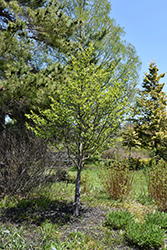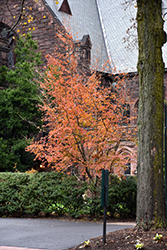It's all about ...
plants

Height: 30 feet
Spread: 20 feet
Sunlight:
![]()
![]()
Hardiness Zone: 6a
Description:
An incredible accent tree with magnificent mottled bark in gray, brown and orange-brown, stunning in winter; showy large white flowers with yellow stamens in early summer; needs organic, acidic soil and protection from drying winds
Ornamental Features
Korean Stewartia features delicate white flowers with yellow anthers along the branches from early to mid summer. It has dark green deciduous foliage. The serrated pointy leaves turn outstanding shades of yellow, orange and red in the fall. The mottled khaki (brownish-green) bark is extremely showy and adds significant winter interest.
Landscape Attributes
Korean Stewartia is a dense deciduous tree with a distinctive and refined pyramidal form. Its average texture blends into the landscape, but can be balanced by one or two finer or coarser trees or shrubs for an effective composition.
This is a relatively low maintenance tree, and should only be pruned after flowering to avoid removing any of the current season's flowers. It has no significant negative characteristics.
Korean Stewartia is recommended for the following landscape applications;
- Accent
- Shade
Planting & Growing
Korean Stewartia will grow to be about 30 feet tall at maturity, with a spread of 20 feet. It has a low canopy with a typical clearance of 3 feet from the ground, and should not be planted underneath power lines. It grows at a slow rate, and under ideal conditions can be expected to live for 70 years or more.
This tree does best in full sun to partial shade. It requires an evenly moist well-drained soil for optimal growth, but will die in standing water. It is very fussy about its soil conditions and must have rich, acidic soils to ensure success, and is subject to chlorosis (yellowing) of the foliage in alkaline soils. It is quite intolerant of urban pollution, therefore inner city or urban streetside plantings are best avoided, and will benefit from being planted in a relatively sheltered location. Consider applying a thick mulch around the root zone in winter to protect it in exposed locations or colder microclimates. This species is not originally from North America.
This plant is not reliably hardy in our region, and certain restrictions may apply; contact the store for more information.


